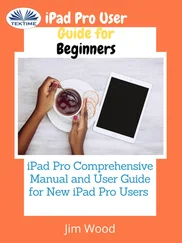With the post-war reconstruction and then rapid development of other economies, this assumption was not valid any more. Once people realized that the US dollar was not as good as gold, they had a greater incentive to convert dollars into gold, which reduced the US gold reserve even further and made the dollar look even less reliable. The US official liabilities (dollar bills and Treasury Bills, namely, the US government bonds), which had been only half the size of its gold reserve until 1959, became one and a half times larger by 1967. [54] Glyn et al., ‘The rise and fall of the Golden Age’, p. 98.
In 1971, the US dropped its commitment to convert any dollar claims into gold, which led other countries to abandon the practice of tying their national currencies to the dollar at fixed rates over the next couple of years. This created instability in the world economy, with currency values fluctuating according to market sentiments and becoming increasingly subject to currency speculation (investors betting on currencies moving up or down in value).
The end of the Golden Age was marked by the First Oil Shock in 1973, in which oil prices rose fourfold overnight, thanks to the price collusion of the cartel of the oil- producing countries, OPEC (Organization of Petroleum Exporting Countries). Inflation had been slowly increasing in many countries since the late 1960s but, following the Oil Shock, it shot up.
More importantly, the next several years were characterized by stagflation. This newly coined term referred to the breakdown of the age-long economic regularity that prices fall during a recession (or stagnation) and rise during a boom. Now, the economy was stagnating (albeit not exactly in a prolonged recession, like during the Great Depression) but prices were rising fast, at 10, 15 or even 25 per cent per year. [55] The average inflation rate of Europe reached up to 15 per cent while the US rate also surged above 10 per cent. The UK suffered particularly, with the inflation rate reaching almost 25 per cent in 1975. From Dow, Major Recessions , p. 293,figure 8.5.
The Second Oil Shock in 1979 finished off the Golden Age by bringing about another bout of high inflation and helping neo-liberal governments come to power in the key capitalist countries, especially in Britain and the US.
This period is often depicted as one of an unmitigated economic disaster by free-market economists, who are critical of the mixed economy model. This is misleading. Growth in the ACCs may have slowed down compared to the Golden Age, but, at 2 per cent per capita, the income growth rate during 1973–80 was still much higher than any period up to the Second World War (1.2–1.4 per cent) and slightly higher than what followed in the next three decades of neo-liberalism (1.8 per cent for 1980–2010). [56] Growth rates in per capita income in the ACCs were 1.4 per cent during 1870–1913, 1.2 per cent during 1913–50, and 3.8 per cent during 1960–70. These figures are from Glyn et al., ‘The rise and fall of the Golden Age’, p. 42, table 2.1.
The unemployment rate, at 4.1 per cent average, was higher than that of the Golden Age (3 per cent), but not by much. [57] Ibid., p. 45, table 2.4.
Still, the fact remains that there was enough dissatisfaction with economic performance during this period for there to be radical changes in the following years.
1980 –Today: The Rise and Fall of Neo-liberalism
The Iron Lady: Margaret Thatcher and the end of British post-war compromise
A major turning point came with the election of Margaret Thatcher as the British prime minister in 1979. Rejecting the post-Second World War ‘wet’ Tory compromise with Labour, Thatcher began a radical dismantling of the mixed economy, in the process earning the sobriquet ‘The Iron Lady’ for her uncompromising attitude.
The Thatcher government lowered higher-rate income taxes, reduced government spending (especially in education, housing and transport), introduced laws reducing union power and abolished capital control(restriction on the cross-border movement of money). The most symbolic move was privatization– sales of SOEs to private investors. Gas, water, electricity, steel, airline, automobile and parts of public housing were privatized.
Interest rates were raised in order to reduce inflation by dampening economic activities and thus demand. The high interest rate attracted foreign capital, driving up the value of the British pound, thus making British exports uncompetitive. The result was a huge recession, as consumers and companies retrenched, between 1979 and 1983. Unemployment soared to 3.3 million people – this under a government that came to power by criticizing James Callaghan’s Labour government’s record on unemployment, which went over the 1 million mark, with the famous slogan ‘Labour isn’t working’, invented by the advertising agency Saatchi & Saatchi.
During the recession, a huge chunk of British manufacturing industry, which had already been suffering from declining competitiveness, was destroyed. Many traditional industrial centres (such as Manchester, Liverpool and Sheffield) and mining areas (North England and Wales) were devastated, as depicted in movies such as Brassed Off (about coal miners in Grimley, a thinly disguised version of Yorkshire coal town Grimethorpe).
The actor: Ronald Reagan and the re-making of the US economy
Ronald Reagan, the former actor and a former governor of California, became the US president in 1981 and outdid Margaret Thatcher. The Reagan government aggressively cut the higher income tax rates, explaining that these cuts would give the rich greater incentives to invest and create wealth, as they could keep more of the fruits of their investments. Once they created more wealth, it was argued, the rich would spend more, creating more jobs and incomes for everyone else; this is known as the trickle-down theory. At the same time, subsidies to the poor (especially in housing) were cut and the minimum wage frozen so that they had a greater incentive to work harder. When you think about it, this was a curious logic – why do we need to make the rich richer to make them work harder but make the poor poorer for the same purpose? Curious or not, this logic, known as supply-side economics, became the foundational belief of economic policy for the next three decades in the US – and beyond.
As in the UK, interest rates were jacked up in an attempt to reduce inflation. Between 1979 and 1981, interest rates more than doubled from around 10 per cent to over 20 per cent per year. A significant portion of the US manufacturing industry, which had already been losing ground to Japanese and other foreign competition, could not withstand such an increase in financial costs. The traditional industrial heartland in the Midwest was turned into ‘the Rust Belt’.
Financial deregulation in the US at this time laid the foundation for the financial system we have today. The rapid increase in hostile takeovers, in which a company is taken over against the will of the existing management, changed the whole corporate culture in the US. Many of those taking over were ‘corporate raiders’ only interested in asset stripping(namely, the sales of valuable assets, regardless of the impact on the long-term viability of the company), immortalized by Gordon ‘Greed-is-good’ Gekko in the 1987 movie Wall Street . To avoid such a fate, firms had to deliver profits faster than before. Otherwise impatient shareholders would sell up, reducing the share prices and thus exposing the firm to greater danger of hostile takeover. The easiest way for companies to deliver quick profit was through downsizing– reducing the workforce and minimizing investments beyond what is necessary for immediate results, even though these actions diminish the prospect of the company in the longer run.
Читать дальше












